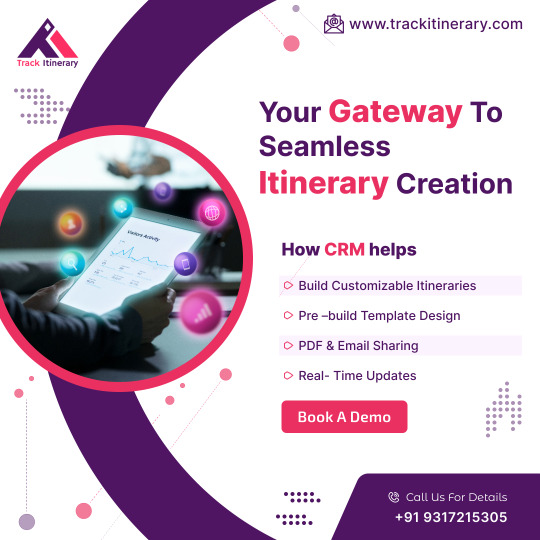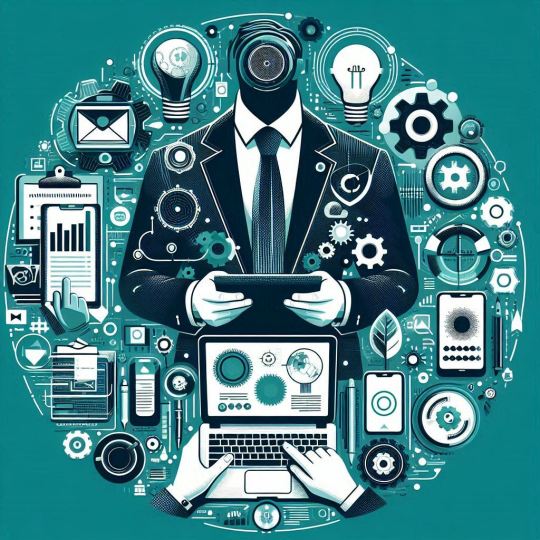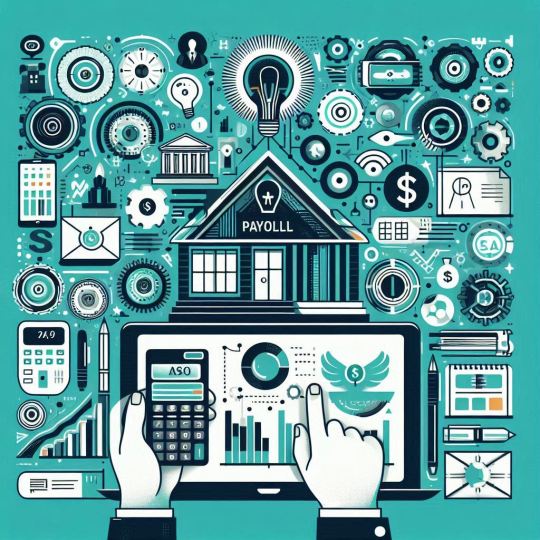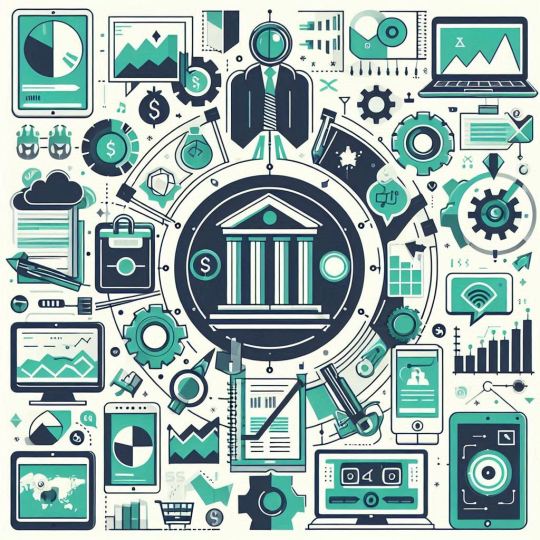#crm software for builders
Explore tagged Tumblr posts
Text
What is a Home Builder CRM and Why is it Important? Enhance Client Relationships & Boost Efficiency
Discover what a Home Builder CRM is and why it’s essential for your business. Learn how this tool helps manage client interactions, streamline project workflows, and improve customer satisfaction, making it a vital resource for home builders aiming to grow and succeed.
Read More

#Home Builder CRM#CRM for home builders#importance of Home Builder CRM#CRM for construction business#improving client relations in home building#home builder project management#CRM software for builders#managing customer relationships in home building.
0 notes
Text
Boost your builder business with our industry-leading CRM software. Streamline project management, track leads, and enhance customer communication. Increase efficiency and stay ahead of the competition. Discover how our CRM software for builders can revolutionize your builder operations. Visit our website to get your personalised app now!
0 notes
Text

Track itinerary for seamless itinerary creation
An intuitive CRM empowers travel agencies to craft seamless travel plans, streamline operations, and deliver exceptional customer service. Book free demo at : trackitinerary.com
#Itinerary Builder#itinerary builder for travel agents#itinerary builder software#tour itinerary builder#travel crm software
0 notes
Text
pro-builder.cloud/get-started
#email marketing#sms marketing#unlimited sales funnels#call tracking#surveys and forms#appointment booking#crm software#analytics#no code website builder
1 note
·
View note
Text
Story of SaaS?

"SaaS" is a term that’s hard to ignore but what exactly does it mean? Imagine instead of dealing with the hassle of downloading and installing software on every device, you can access what you need instantly through the internet. That’s SaaS, or Software as a Service, a cloud-based solution that makes software more accessible, flexible, and user-friendly. Want to understand why SaaS is reshaping the way we use technology so let’s dive in!
Definition of SaaS
Software as a Service (SaaS) is a software distribution model in which applications are hosted by a service provider or vendor and made available to customers over the internet. This model contrasts with traditional software, where the software is purchased and installed on local machines or servers.
The concept of SaaS dates back to the 1960s when IBM and other companies offered mainframe computers on a time-sharing basis. However, the modern SaaS model we are familiar with started to gain traction in the late 1990s and early 2000s with the advent of the internet and advancements in cloud computing technology. Companies like Salesforce were pioneers in this space, demonstrating the potential of delivering software via the web. Proket is also a good example of Saas based CRM software where realtors get the feature of landing page builder for their PPC ad campaigns within seconds.
SaaS vs. Traditional Software
Traditional software models often require substantial upfront costs, installation on local machines, and ongoing maintenance. SaaS, on the other hand, is subscription-based, does not require installation, and is maintained by the service provider. This shift from ownership to service has made SaaS a popular choice among businesses of all sizes.
Key Characteristics of SaaS
Accessibility and Flexibility
One of the standout features of SaaS is its accessibility. Users can access the software from any device, at any time, as long as they have an internet connection. This flexibility allows teams to collaborate more effectively, regardless of location.
Cost-Effectiveness
SaaS typically operates on a subscription-based pricing model, which can significantly reduce the upfront costs associated with purchasing traditional software. This model also allows businesses to scale their usage based on their needs, paying only for what they use.
Automatic Updates and Maintenance
With SaaS based CRM updates and maintenance are handled by the service provider. This means users always have access to the latest features and security updates without having to manage these tasks themselves. It’s a hassle-free experience that ensures your software is always up-to-date.
Scalability and Integration
SaaS solutions are designed to scale easily with your business. Whether you need to add more users or integrate with other software solutions, SaaS platforms can adapt to your growing needs. This scalability is crucial for businesses that are expanding or experiencing fluctuating demand.
How SaaS Works
The Cloud Computing Foundation
SaaS is built on the foundation of cloud computing. This means the software is hosted on the cloud, and users access it via the internet. The cloud infrastructure is managed by the SaaS provider, which includes servers, databases, and networking components.
Cloud Infrastructure
The cloud infrastructure supporting SaaS is robust and designed to handle multiple users simultaneously. This infrastructure is typically spread across multiple data centers to ensure high availability and redundancy. The use of cloud technology allows SaaS providers to offer reliable and scalable services to their users.
SaaS Deployment Models
There are different deployment models for SaaS, including public, private, and hybrid clouds. Public SaaS is available over the internet and is accessible to any user with the necessary credentials. Private SaaS is hosted on a private cloud and is often used by organizations with specific security or compliance needs. Hybrid SaaS combines elements of both public and private deployments.
Subscription-Based Pricing Model
One of the defining features of SaaS is its subscription-based pricing model. Instead of purchasing a software license, users pay a recurring fee to access the software.
Benefits of Subscription Model
The subscription model offers several benefits, including predictable costs, flexibility to scale usage, and access to regular updates. It also reduces the financial burden of large upfront software purchases, making it an attractive option for businesses of all sizes.
Common SaaS Pricing Tiers
SaaS providers typically offer several pricing tiers to cater to different user needs. These tiers might include basic, standard, and premium plans, each offering varying levels of features and support. This tiered approach allows users to choose the plan that best fits their requirements and budget.
Advantages of SaaS
Enhanced Collaboration
SaaS tools are designed with collaboration in mind. They allow multiple users to access the same platform, share documents, and work together in real-time. This level of collaboration is particularly beneficial for remote teams and global organizations.
Reduced Time to Deployment
SaaS applications can be up and running in a matter of hours or days, compared to traditional software, which might take weeks or even months to deploy. This rapid deployment means businesses can start using the software almost immediately, without lengthy installation processes.
Global Accessibility
Because SaaS is delivered via the cloud, it’s accessible from anywhere in the world. This global accessibility is a significant advantage for businesses with distributed teams or international operations, allowing them to maintain consistent workflows regardless of geographic location.
Automatic Software Updates
With SaaS, users don’t need to worry about manually updating their software. The service provider takes care of all updates, ensuring that users always have access to the latest features and security patches. This automatic update process helps maintain software efficiency and security.
Popular Examples of SaaS
Proket
Proket, a leading SaaS customer relationship management (CRM) platform which offers various features like landing page creation for lead generation, project management, lead nurturing, team management and much more.
Google Workspace
Google Workspace, formerly known as G Suite, is a suite of productivity and collaboration tools, including Gmail, Google Docs, and Google Drive. It’s a prime example of how SaaS can enhance collaboration and efficiency within teams.
Microsoft 365
Microsoft 365 offers a suite of tools similar to Google Workspace, including Word, Excel, and Outlook. It’s available as a SaaS product, allowing users to access Microsoft’s powerful productivity tools from anywhere.
Zoom
Zoom has become synonymous with video conferencing, especially in the post-pandemic era. As a SaaS platform, Zoom allows users to host and join virtual meetings, webinars, and conferences with ease.
Final Words
SaaS has transformed the way we interact with software, offering unmatched convenience, flexibility, and cost-effectiveness. By eliminating the need for complex installations and ongoing maintenance, SaaS enables businesses and individuals to access cutting-edge technology from anywhere, at any time. Whether it's for collaboration, productivity, or specialized tools like Proket’s CRM, SaaS solutions are designed to meet the evolving demands of the digital age. As more organizations embrace cloud-based services, the impact of SaaS on the global technology landscape will only continue to grow.
#lead generation for realtors#Best Landing Page Software with CRM#CRM Landing Page Builder#Best Landing Page Software 2024#Landing Page Builder with CRM
0 notes
Text
5th Exam for Real Estate Agents Initiated by MahaRERA
The Maharashtra Real Estate Regulatory Authority (MahaRERA) has set the fifth online exam for prospective real estate agents in the state's thriving real estate market. This important evaluation is set for 29 July and is intended to preserve the highest levels of professionalism and expertise in the field while giving buyers' interests first priority.
5,260 eligible applicants in all are getting ready to take part in this important examination. The participants are from different parts of Maharashtra and are dispersed across 24 test venues in different cities. The Mumbai Metropolitan Region has the most candidates (3,081), followed by Pune (15,533), Nagpur (518), and lesser numbers from Nashik, Kolhapur, Aurangabad, Sangli, Amravati, Jalgaon, and Nanded.
Previous rounds of the agent registration process in Maharashtra saw about 9,295 successful candidates out of 47,000 registered agents. This indicates that the strict conditions imposed by MahaRERA have eliminated those applicants who did not fulfil the required standards. Remarkably, 13,785 agents' licences were revoked for non renewal, and over 20,000 agents risked suspension for failing to follow training and certification requirements by December 31.
A real estate agent serves as a crucial intermediary between developers and buyers, which makes their involvement in the home-buying process crucial. They act as the main information source for prospective homebuyers, providing facts on agreements, regulatory requirements, project insights, and more. By equipping buyers with the necessary knowledge and training, agents may improve transparency and confidence in the real estate industry by enabling them to make well-informed investment decisions.
Ajoy Mehta, the chairman of MahaRERA, highlighted the organisation's dedication to safeguarding buyers and making sure agents follow the ethical guidelines established by the Real Estate (Regulation and Development) Act. MahaRERA is promoting a more secure and informed environment for all parties involved by raising the professionalism and credibility of real estate agents throughout Maharashtra via rigorous training, tests, and strict regulations.
#construction management#construction software#crm software#builders#construction#consultant#developers#erp#development#erp software
0 notes
Text
#email marketing#sms marketing#unlimited sales funnels#call tracking#surveys and forms#appointment booking#crm software#analytics#no code website builder#yemen
1 note
·
View note
Text
Best construction management ERP software development company!
With over 25 years of experience, we are a specialized Construction ERP software development company designed for builders, real estate developers, and infrastructure companies. Our integrated modules cover everything from project planning to financial tracking, with exceptional customer support and training. Our ERP Highrise is the ultimate solution for managing construction projects.
Get a Free Demo Today and Take Your Construction Projects to New Heights with Highrise's Cutting-edge ERP Software.
#Construction Management Software#erp for real estate#construction management erp#crm for builders#contract management software#contracting software#construction software development company
0 notes
Text
Travel Itinerary Builder Software: Streamlining Travel Planning
Travel Itinerary Builder Software comes in as a game-changer for Travel Industry.
👇 Checkout Now For More:
#itinerary builder software#itinerary builder#b2b travel portal#crm company#best crm for small business#hellogtx#travel agent in delhi#b2b travel agency#crm development#travel software
1 note
·
View note
Text
Why Every Builder Should Consider Implementing a Construction Management CRM
Are you a builder looking to streamline your construction management process and take your business to the next level? If so, then implementing a Construction Management CRM for Builders (Customer Relationship Management) system might just be the game-changer you've been searching for. In today's competitive market, staying organized and efficient is crucial for success. A CRM designed specifically for builders can revolutionize how you manage projects, communicate with clients, and ultimately boost your bottom line. So why should every builder consider incorporating a Construction Management CRM into their operations? Let's explore the numerous benefits it offers and discover how it can transform your business from good to extraordinary!
What are the benefits of using a CRM for construction management?
A Construction Management CRM serves as a centralized hub for all project-related information, including contacts, documents, schedules, and more. This eliminates the need for manual record-keeping and reduces the risk of important details slipping through the cracks. With everything at your fingertips, you can easily access and update data in real-time, ensuring that everyone on your team is on the same page.
Effective communication is key to successful construction management. A CRM enables seamless collaboration between builders, clients, subcontractors, and suppliers by providing a platform for exchanging messages, sharing updates, and requesting approvals. This streamlines workflows and minimizes delays caused by miscommunication or missed deadlines.
Building strong client relationships is essential for repeat business and referrals. A CRM allows you to track client interactions comprehensively – from initial inquiries to post-construction follow-ups – enabling personalized communication tailored to their specific needs. By understanding your clients better and delivering exceptional service consistently, you can foster loyalty while attracting new prospects.
Why you should consider using a CRM in your business
Implementing a CRM allows you to centralize all of your customer data in one place. This means that instead of hunting through spreadsheets or paper files, you can quickly access important information such as contact details, project history, and communication logs. Having this data readily available not only saves time but also improves customer service by enabling more personalized interactions.
A CRM helps streamline your workflows and processes. With features like task management and automated reminders, you can ensure that nothing falls through the cracks. You'll be able to track project progress more effectively, assign tasks to team members efficiently, and monitor deadlines effortlessly.
How to choose the right CRM for your business
Choosing the right CRM for your Construction Management Software for Builders is a crucial decision that can significantly impact your efficiency, productivity, and overall success. With so many options available in the market, it's important to consider certain factors before making your choice.
Assess your specific needs and requirements. Determine which features are essential for streamlining your construction processes and improving communication with clients, contractors, and suppliers. Look for a CRM that offers tools such as project management capabilities, document sharing functionality, scheduling modules, and robust reporting options.
Ensure compatibility with existing systems and software used in your company. Integration capabilities are vital to avoid any data silos or duplication of efforts. A seamless connection between different platforms will not only save time but also improve accuracy when managing various aspects of construction projects.
0 notes
Text
Why CRM Software is Essential for Home Construction Projects?
Discover how CRM software can streamline home construction projects by improving client communication, project management, and efficiency.
Read More

#CRM software#home construction#colour selection#construction management#client preferences#design tools#project management#home design software#builder-client communication#efficient construction process#colour options for homes#construction software tools
0 notes
Text
AI Agent Development: How to Create Intelligent Virtual Assistants for Business Success
In today's digital landscape, businesses are increasingly turning to AI-powered virtual assistants to streamline operations, enhance customer service, and boost productivity. AI agent development is at the forefront of this transformation, enabling companies to create intelligent, responsive, and highly efficient virtual assistants. In this blog, we will explore how to develop AI agents and leverage them for business success.

Understanding AI Agents and Virtual Assistants
AI agents, or intelligent virtual assistants, are software programs that use artificial intelligence, machine learning, and natural language processing (NLP) to interact with users, automate tasks, and make decisions. These agents can be deployed across various platforms, including websites, mobile apps, and messaging applications, to improve customer engagement and operational efficiency.
Key Features of AI Agents
Natural Language Processing (NLP): Enables the assistant to understand and process human language.
Machine Learning (ML): Allows the assistant to improve over time based on user interactions.
Conversational AI: Facilitates human-like interactions.
Task Automation: Handles repetitive tasks like answering FAQs, scheduling appointments, and processing orders.
Integration Capabilities: Connects with CRM, ERP, and other business tools for seamless operations.
Steps to Develop an AI Virtual Assistant
1. Define Business Objectives
Before developing an AI agent, it is crucial to identify the business goals it will serve. Whether it's improving customer support, automating sales inquiries, or handling HR tasks, a well-defined purpose ensures the assistant aligns with organizational needs.
2. Choose the Right AI Technologies
Selecting the right technology stack is essential for building a powerful AI agent. Key technologies include:
NLP frameworks: OpenAI's GPT, Google's Dialogflow, or Rasa.
Machine Learning Platforms: TensorFlow, PyTorch, or Scikit-learn.
Speech Recognition: Amazon Lex, IBM Watson, or Microsoft Azure Speech.
Cloud Services: AWS, Google Cloud, or Microsoft Azure.
3. Design the Conversation Flow
A well-structured conversation flow is crucial for user experience. Define intents (what the user wants) and responses to ensure the AI assistant provides accurate and helpful information. Tools like chatbot builders or decision trees help streamline this process.
4. Train the AI Model
Training an AI assistant involves feeding it with relevant datasets to improve accuracy. This may include:
Supervised Learning: Using labeled datasets for training.
Reinforcement Learning: Allowing the assistant to learn from interactions.
Continuous Learning: Updating models based on user feedback and new data.
5. Test and Optimize
Before deployment, rigorous testing is essential to refine the AI assistant's performance. Conduct:
User Testing: To evaluate usability and responsiveness.
A/B Testing: To compare different versions for effectiveness.
Performance Analysis: To measure speed, accuracy, and reliability.
6. Deploy and Monitor
Once the AI assistant is live, continuous monitoring and optimization are necessary to enhance user experience. Use analytics to track interactions, identify issues, and implement improvements over time.
Benefits of AI Virtual Assistants for Businesses
1. Enhanced Customer Service
AI-powered virtual assistants provide 24/7 support, instantly responding to customer queries and reducing response times.
2. Increased Efficiency
By automating repetitive tasks, businesses can save time and resources, allowing employees to focus on higher-value tasks.
3. Cost Savings
AI assistants reduce the need for large customer support teams, leading to significant cost reductions.
4. Scalability
Unlike human agents, AI assistants can handle multiple conversations simultaneously, making them highly scalable solutions.
5. Data-Driven Insights
AI assistants gather valuable data on customer behavior and preferences, enabling businesses to make informed decisions.
Future Trends in AI Agent Development
1. Hyper-Personalization
AI assistants will leverage deep learning to offer more personalized interactions based on user history and preferences.
2. Voice and Multimodal AI
The integration of voice recognition and visual processing will make AI assistants more interactive and intuitive.
3. Emotional AI
Advancements in AI will enable virtual assistants to detect and respond to human emotions for more empathetic interactions.
4. Autonomous AI Agents
Future AI agents will not only respond to queries but also proactively assist users by predicting their needs and taking independent actions.
Conclusion
AI agent development is transforming the way businesses interact with customers and streamline operations. By leveraging cutting-edge AI technologies, companies can create intelligent virtual assistants that enhance efficiency, reduce costs, and drive business success. As AI continues to evolve, embracing AI-powered assistants will be essential for staying competitive in the digital era.
5 notes
·
View notes
Text
Best Business Software Tools in 2024
The right software tools can help increase productivity, draft operations more efficiently and promote company growth in today's high-paced business environment. Whether you are a start-up or an existing enterprise the following business software is necessary to improve different areas of your business.
1. Project Management: ClickUp

It is a feature-laden project manager that lets you handle tasks, projects, and workflows of all types. Its ease of use and user-friendly interface, complimented with diverse dashboards cater to audiences between small teams and large organizations. Task assignments, time tracking, goal setting, and collaboration options allow you to stop hopping between spreadsheets and emails so your projects are complete efficiently.
2. CRM–– Zoho CRM
Zoho CRM — Your Intelligent Customer Relationships Management System. Among other features, it has lead management, sales automation, and analytics to make sales performance improve on a consistent streamline both administrative aspect as well as customer satisfaction. Due to its integration capabilities with other Zoho products, as well as most third-party applications, It has become a flexible option for businesses that are ready to supercharge their customer relationship management.
3. Accounting: Zoho Books

Zoho Books- The Best Accounting Software for Business Owners Invoicing, expense tracking and financial reporting are some of its features. You can also rest assured that your taxes are being handled correctly and always have the latest view of your financial health to help you manage your finances better.
4. HR Management: monday. com HR
It is a complete human resources management software that helps companies to better structure their workforce. This system provides with facilities like employee on boarding, performance tracking, payroll management etc. With the platform's ease of use, UI simplicity, and automation capabilities in HR processes that would otherwise take hours away from key HR initiatives.
5. Payroll: OnPay

OnPay is an excellent payroll software for businesses of all sizes. It is a cloud payroll software for businesses that ensures complete compliance and automation of top-class payroll calculations, tax filings & employee payments. Additionally, OnPay provides HR and benefits management tools, effectively providing a full-fledged employee pay management solution.
6. Point-of-Sale (POS): eHopper
Versatile Point of Sale Software for Businesses Up To Mid-Sized It offers services like Inventory management, sales tracking and customer management. This makes eHopper a perfect choice for businesses that intend to simplify their sales operations using an affordable and intuitive POS system.
7. Inventory Management: Cin7

While there are plenty of other inventory management systems available, Cin7 stands out as one of the most popular options for small to mid-size businesses (SMBs) looking to get their stock levels, orders and supply chain operations under control. These functionalities consist of real-time inventory monitoring, order processing and e-commerce platform integration. With the powerful feature set of Cin7, businesses can keep inventory at an optimal level and fulfill customer demands to the hilt.
8. Website Builder: Weebly
Weebly is the website builder that you can also use to build your site or blog. It has lots of customizable templates, drag-and-drop functionality, and e-commerce ready to go. With Weebly, you can create a professional website even if you are a tech noob and give your business the relevant online visibility it needs.
9. Recruiting: ZipRecruiter

ZipRecruiter: Popular rated job search app for businesses on board. They provide hiring solutions through features like job posting candidates filtering and tracking the application. AI-powered matching from ZipRecruiter surfaces more relevant candidates to businesses faster.
10. VPN: NordVPN
It is a secure, encrypted VPN application that will make sure that you and your business stay safe as you work with the web. It provides features of encrypted connections, threat protection and global server access as well. In this way, It guarantees secure data in companies and privacy on internet.
Conclusion
The business software tools a company uses are very important to increase productivity and power growth. The above-mentioned tools are some of the best & flexible according to the fact which can assist businesses for any sized groups and help them attain their desired objectives. Implementing these tools in your operations can also help speed up processes and lead to higher customer satisfaction, as well as allow you to be on top of the competition.
#business#business growth#innovation#startup#entrepreneur#100 days of productivity#project management#sales#payroll#hr management#hr software#hr services#ai#artificial intelligence#technology#tech#techinnovation
3 notes
·
View notes
Text
4th Quarter Technologies (4QT) offers advanced Construction Purchase and Store Management Software Solutions designed to streamline and optimize the procurement and inventory management processes in the construction industry. These solutions cater to the specific needs of construction companies, helping them manage resources efficiently, reduce costs, and enhance overall project management.
2 notes
·
View notes
Text
#email marketing#sms marketing#unlimited sales funnels#call tracking#surveys and forms#appointment booking#crm software#analytics#no code website builder
1 note
·
View note
Text
What is CRM Email Campaign Management?

Customer Relationship Management (CRM) email campaign management involves planning, executing, and analyzing email marketing campaigns to nurture and engage customers. Here are some key components and strategies for effective CRM email campaign management:
1. Define Your Goals
Identify Objectives: Define the primary goals of your email campaigns by identifying key objectives. These often include increasing sales through targeted promotions, boosting customer engagement with personalized content, promoting new products or services to generate interest, and building brand loyalty by fostering ongoing relationships. Clear objectives guide your strategy, ensuring your emails deliver value and resonate with your audience, ultimately driving desired actions and enhancing overall business performance.
2. Segment Your Audience
Customer Segmentation: Customer segmentation involves dividing your email list into distinct groups based on criteria such as demographics, purchase history, engagement level, and preferences. By segmenting your audience, you can tailor your email content to address the specific needs and interests of each group, resulting in more personalized and relevant communications. This approach enhances customer experience, increases engagement rates, and improves the effectiveness of your email campaigns by ensuring that recipients receive messages that resonate with their unique profiles.
3. Personalization
Tailored Content: Leverage customer data to craft personalized emails, addressing recipients by their names for a personal touch. Tailor the content to reflect their past interactions and preferences, such as recommending products they've shown interest in or offering exclusive deals. This enhances relevance and engagement, fostering stronger customer connections.
Dynamic Content: Use dynamic content blocks in your emails to adjust the message based on recipient data, such as location, past purchases, or browsing history. This ensures each email is highly relevant to the individual, improving engagement and response rates by delivering personalized and timely content tailored to their specific needs and interests.
4. Design and Content Creation
Engaging Design: Design visually appealing, mobile-friendly emails with clear, responsive layouts. Use a clean, simple design with engaging visuals and concise text. Ensure your emails adapt to various screen sizes for optimal readability. Prioritize a single-column format and large, tappable buttons for an enhanced user experience on mobile devices.
Compelling Copy: Craft engaging and concise email copy with a compelling call-to-action (CTA). Blend text, images, and videos to create an interactive experience. Ensure your message is clear and actionable, guiding recipients towards the desired action with visually appealing and dynamic content that captures attention and drives engagement.
5. Automation
Email Automation: Create automated email workflows for various customer journey stages like welcome series, abandoned cart reminders, and post-purchase follow-ups. Tailor each sequence to trigger timely emails based on customer actions, nurturing relationships and increasing conversions by providing relevant information and encouraging further engagement with your brand.
Behavioral Triggers: Utilize triggers linked to customer actions such as website visits or purchase behavior to automatically send timely and relevant emails. By responding promptly to these actions, you can deliver personalized content that matches their current interests or needs, enhancing engagement and driving conversions effectively.
6. A/B Testing
Test and Optimize: Conduct A/B tests on various email elements like subject lines, CTAs, and content layouts to identify which versions perform best with your audience. This process helps optimize email campaigns by comparing two variants to see which one drives higher engagement, click-through rates, and overall effectiveness.
7. Analytics and Reporting
Track Performance: Utilize CRM system to track essential metrics, including open rates, click-through rates, conversion rates, and unsubscribe rates. By analyzing these data points, you can gain insights into customer behavior, measure campaign effectiveness, and make data-driven decisions to improve your marketing strategies and customer engagement.
Data-Driven Decisions: Examine performance data to identify successful and unsuccessful elements of your email campaigns. This analysis provides insights into audience preferences and behaviors, allowing you to adjust your strategies for better results. Continuously refining your approach based on data helps optimize engagement, conversion rates, and overall campaign effectiveness.
8. Compliance
Regulatory Compliance: Ensure your email campaigns adhere to regulations like GDPR, CAN-SPAM, and other data protection laws to avoid legal issues and build trust with your audience. This includes obtaining explicit consent for data collection and use, providing clear information on data usage, and offering easy opt-out mechanisms. Always include clear, accessible unsubscribe options in every email to respect recipients' preferences and maintain compliance with legal requirements, thereby promoting ethical marketing practices.
9. Customer Feedback
Collect Feedback: Encourage recipients to share feedback on your emails through surveys or direct responses. This feedback provides valuable insights into customer preferences and satisfaction, helping you understand their needs better. Using this information, you can tailor future email campaigns to enhance engagement and effectiveness, ultimately improving customer relationships.
Tools for CRM Email Campaign Management
Email Marketing Platforms: Utilize platforms like Mailchimp, HubSpot, Salesforce Marketing Cloud, or ActiveCampaign for creating, sending, and analyzing your email campaigns.
CRM Software: Integrate with CRM systems like Proket, Salesforce, Zoho CRM, or Microsoft Dynamics to manage customer data and automate email workflows.
Final Words
Effective CRM email campaign management combines strategic planning, personalized content, and data-driven insights to enhance customer engagement and drive business success. By defining clear goals, segmenting your audience, leveraging automation, and ensuring compliance with regulations, you can create impactful email campaigns. Utilize tools like Mailchimp and Salesforce to streamline processes and continuously refine your strategies based on performance data and customer feedback, ultimately fostering stronger customer relationships and achieving better marketing outcomes.
1 note
·
View note